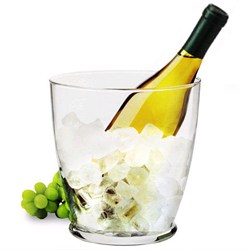I would, of course! And by the way, that’s 104 Fahrenheit for my adoring (and adored) American followers!
Over time, we have brought more bottles of decent wine to our place in the Hunter Valley. However, I wanted to be careful as I did not have proper wine storage and the temperature can vary greatly from several degrees below zero (Celsius) to 40 or so degrees based on the time of season, so I did not bring too many great wines that I knew I would have to lay down until a future trip. This type of variation is not good for wine storage, especially when a cork is involved. Yet, I always like to have some nice bottles around to go with dinner or to bring to a friends.
And that is how the 2000 Lindeman’s Pyrus found its way to our place in the Hunter Valley. We now have a small Vintec which allows me to store with confidence about 30 bottles of good red and a few Montrachet. I also have about 30 or so other bottles of medium quality whites and reds that I store in a cabinet or under the bed. It was in reorganizing the other day that I found the 2000 Lindeman’s Pyrus which had been around for a while, but I missed transferring to the Vintec. I wanted to make sure to drink it right away and today seemed like a good time for it.
First of all, we are BBQ’ing this evening some pork ribs, corn on the cob, asparagus wrapped in prosciutto, and some small tofu steaks. I thought a very nice red wine would go with that. Secondly, I am writing a few wine blog posts today and could not consider writing about wine without having a nice glass at my side to help me out! After all, I am inside and the we are running the Air Conditioner. But that being the case, the room temperature is still a few degrees higher than I would like for the wine, so I have made a rare exception and put two reusable ice cubes into the Pyrus to cool it down a few degrees.
This is a extremely nice, but not a truly great wine (at least not yet!). It is very smooth and balanced. It tastes like a classic second or even possibly first growth Bordeaux, except that it lacks the complexity and robust flavors of a great Bordeaux. But then, I have recently been drinking and raving about the 1987 Lindeman’s Pyrus and the 1992 Lindeman’s Pyrus, so it may be an unfair comparison to call the 2000 Pyrus lacking in complexity! I expect with another 5 – 10 years in the bottle that the secondary characteristic of the maturing Cabernet Franc grape will add some real structure and an enhanced flavoring to the wine. Unfortunately, this is my only bottle, so I will not be able to witness that unless someone shares a bottle with me in the next decade.
The wine is a blend of Cabernet Sauvignon, Merlot and Cabernet Franc. The 1987 Lindeman’s Pyrus and the 1992 Lindemans’s Pyrus also contained Malbec in the blend which would have added to the nuances of these great old red wines. The 2000 Lindemans’ Pyrus has a dark chocolate nose to it and tastes of plums, cherries and blackberry. It is subtle and beautifully nuanced and should be a great match for dinner tonight.
I have been primarily a fan of the the other two members of the Lindeman’s Trio – the St George (Cabernet Sauvignon) and the Limestone Ridge (blend of Cabernet Sauvignon and Shiraz), but am really growing more fond of the Lindeman’s Pyrus, especially the older ones where the Cabernet Franc grape has had a chance to evolve and provide some real elegance to this great blend.
This wine is so easy to drink! The Cabernet Sauvignon grape is prominent and so smooth. My only problem with this wine is that I seem to only have about one-third of the bottle left for dinner! Oh well, better get onto that!



